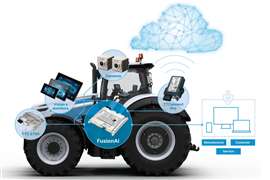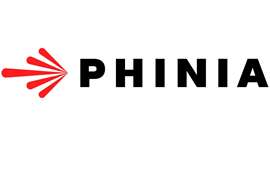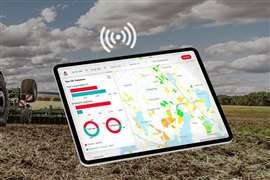Read this article in Français Deutsch Italiano Português Español
Autonomous vehicles at a crossroads: balancing deregulation, safety and momentum
25 February 2025
Making predictions about 2025 has been complicated by considerations regarding what the first year of the Trump administration might look like. Given that Republicans tend to favor deregulation — indeed, President Trump has already begun making dramatic changes to various federal regulatory agencies — some have tried to divine what current and potential regulatory shifts might mean for certain initiatives. One of these is autonomous vehicle (AV) operation.
 The Volvo VNL Autonomous truck, which is being put into operation in Texas for DHL Supply Chain. (Photo: Volvo)
The Volvo VNL Autonomous truck, which is being put into operation in Texas for DHL Supply Chain. (Photo: Volvo)
In a recent blog post, Holland & Knight, an international law firm that practices in over 250 areas of law, characterized AVs as standing “at the forefront of innovation, poised to revolutionize transportation globally.” The firm said that while the Trump administration is expected to broadly deregulate, it will likely bring enthusiasm for AVs, cooperating with the AV industry while also focusing on ensuring safe operation.
“The balance between deregulation and safety will be crucial to ensuring that the rapid deployment of AVs and other emerging technologies does not compromise public trust,” Holland & Knight said.
Another global law firm, Clyde & Co, which practices law related to insurance, aviation, marine, construction, energy, trade and natural resources, published its own predictions about AV-related legal trends in a January 2025 blog post. Regarding the regulatory environment, the firm noted that a new federal framework could replace the current patchwork of state regulations, streamlining AV deployment and standardizing AV testing. Both developments could affect liability claims and lawsuits as courts and insurers determine shared responsibility among OEMs, operators and others.
AV Enthusiasm
When it comes to the regulatory environment for on-highway AVs, the new presidential administration might have some momentum it can capitalize on that the Biden administration did not.
“The first Trump administration had taken some early steps to consider the types of changes that would be necessary in order to allow further adoption and adapt its current regulations,” said Joel Roberson, a partner at Holland & Knight with expertise in the transportation sector. “That really fell to the wayside under the Biden administration. It was never a priority to advance that technology.”
Those early steps could bode well for the AV industry and lay the groundwork for future regulatory changes.
Roberson added that President Trump also has the benefit of support from Elon Musk, whose AV ambitions regarding both passenger and commercial vehicles are well known.
“I think he will receive pressure from both Elon Musk as well as a lot of the private equity and venture capital backers that are seeing this technology as the future,” he said.
Addressing Safety
However, Roberson said advances in AV technology will have to be balanced against safety concerns. Also at play are complicated regulations.
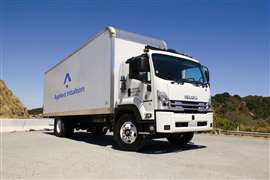 Applied Intuition and Isuzu Motors have entered into a partnership to develop autonomous commercial trucks. (Photo: Applied Intuition)
Applied Intuition and Isuzu Motors have entered into a partnership to develop autonomous commercial trucks. (Photo: Applied Intuition)
“The legal environment for commercial motor vehicles is complex in two ways,” he said. “One, there are federal regulations over the safety of those vehicles operating on public roads. And then there are also, for commercial motor vehicles, regulations over the driver. And those two things come together to create a complex environment for automation, whether it be advanced driver assist technology or fully autonomous vehicles.”
Roberson said that regulations related to the design of commercial motor vehicles themselves are overseen by the National Highway Traffic Safety Administration (NHTSA), while the operation of commercial motor vehicles is regulated by the Federal Motor Carrier Safety Administration (FMCSA) and sometimes by the states.
Nanci Schanerman, senior counsel for Clyde & Co, is involved with the law related to safety concerns and AV operations.
“I work with the insurance industry and for carriers,” she said, “and the main concern with new technology is who is going to be responsible in the event of an issue.”
Beyond the operator and the trucking company, Schanerman said those who could be subject to liability include OEMs and their suppliers, dealers that sell the vehicles and software developers and consultants.
According to Schanerman, there is an increasing patchwork of legislation across states that merit some kind of federal oversight.
“A federal framework addressing the transition from a state-by-state approval system to a unified approach with the federal framework would preempt all the state laws that conflict,” Schanerman said. “A uniform system would allow commercial vehicles to drive out of their registered states without being subject to different laws.”
Navigating Complex Regulations
Echoing the complexity of the regulatory environment, Roberson said that enthusiasm about possible change in the transportation sector should not preclude a detailed review of the various legal burdens that apply to AVs.
“Commercial motor vehicle operators need to be thinking about the complexity of FMCSA’s regulations of the driver, ensuring that the Trump administration provides adequate flexibility to allow them to deploy in all the circumstances that they’re looking to test or potentially deploy this technology,” Roberson said. “Because it is a complex and highly regulated industry.
“The safety of the vehicle and the ability for the regulations of the driver to adapt, to make that driver be agnostic, to whether that driver is a human or a computer, is going to be a very detailed process.”
Off-Highway Opportunities
According to Schanerman, on- and off-highway AVs differ from a regulatory perspective.
“There’s a big difference between on-highway and off-highway AVs, mainly because of testing protocol,” she said.
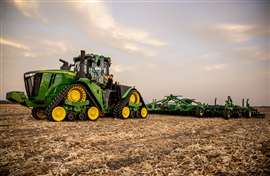 John Deere’s autonomous 9RX tractor. (Image: John Deere)
John Deere’s autonomous 9RX tractor. (Image: John Deere)
Roberson added that the federal government regulates on-highway vehicles because they can be used in interstate commerce. That is not the same with off-highway vehicles.
“A vehicle that’s designed to operate off-road or on a nonpublic road, such as a construction site, a mine or only private property — there is no federal nexus for the regulation of that vehicle,” he said. “Therefore, the regulation would be more of a consumer protection — making sure that the vehicle is not unsafe for the operator — but not that it is compliant with all NHTSA and FMCSA regulations.”
This makes the regulatory environment more flexible, and as such, Roberson said automation of off-highway equipment presents a significant opportunity for OEMs.
“You can imagine a lot of mundane tasks — [for example] moving dirt from one side of a property to another side of a property — which is currently being done by human operators,” he said. “And it’s probably not the most valuable use of human time. And the human brain could be replaced by automation.”
Careful Evaluation Recommended
Roberson said that the work of the new Department of Government Efficiency (DOGE) could create opportunities by reviewing federal regulations that have not been evaluated for some time. However, any steps taken as a result of those reviews should be done with some caution.
“They need to be really careful in considering what the impact would be on highly regulated industries and on the economy,” he said. “Because if we start to see a drag on the ability for regulated commercial motor vehicles to continue to operate, or for projects that require significant numbers of commercial motor vehicles to be [used], then that’s going to create a drag on the economy.”
Roberson continued, “Where there are key functions that the federal government performs in the commercial motor vehicle space that are at risk, potentially being negatively impacted, there will be opportunities to voice those concerns. And on the opposite side, as well, there will be opportunities to voice concerns where the community thinks that regulation should be revised or reconsidered.”
POWER SOURCING GUIDE
The trusted reference and buyer’s guide for 83 years
The original “desktop search engine,” guiding nearly 10,000 users in more than 90 countries it is the primary reference for specifications and details on all the components that go into engine systems.
Visit Now
STAY CONNECTED




Receive the information you need when you need it through our world-leading magazines, newsletters and daily briefings.
CONNECT WITH THE TEAM











